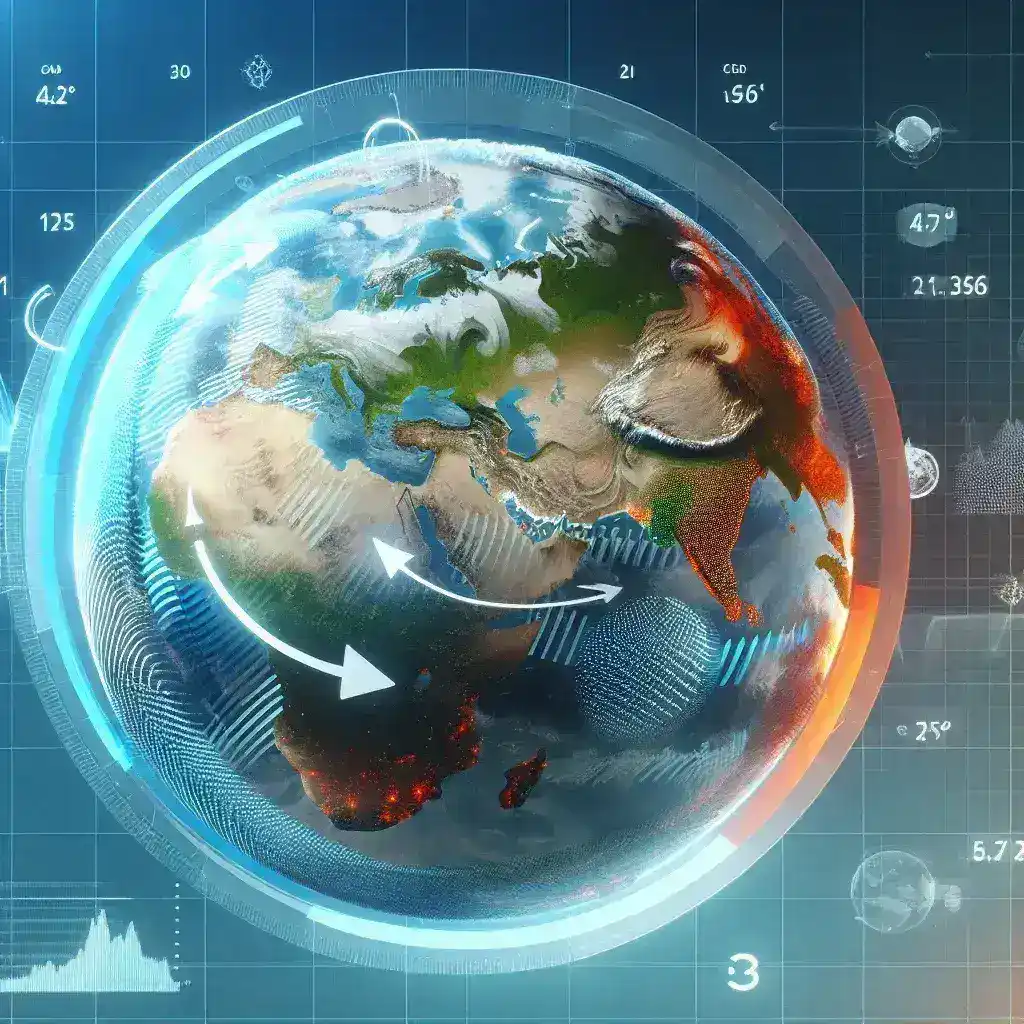Introduction
In a world increasingly affected by climate change, the need for innovative solutions to address its impacts has never been more critical. Google Earth has recently taken a significant step forward by rolling out climate migration projection maps. These maps aim to visualize potential future migration patterns of populations displaced by environmental changes, providing valuable insights for policymakers, researchers, and communities alike.
The Significance of Climate Migration
As global temperatures rise and natural disasters become more frequent, the phenomenon of climate migration is anticipated to escalate. According to the United Nations, by 2050, approximately 200 million people could be forced to leave their homes due to climate-related factors. Understanding these patterns is essential to prepare for the challenges ahead.
Historical Context
Historically, migration has always been influenced by environmental changes. From the Dust Bowl in the 1930s that displaced thousands of American farmers to the current crises in areas like the Sahel and the Pacific Islands, climate has played a pivotal role in human movement. However, the scale and speed of current climate change pose unprecedented challenges.
Introducing Google Earth’s Climate Migration Projection Maps
Google Earth’s new migration projection maps leverage extensive data sets to illustrate how various climate scenarios—such as rising sea levels, extreme weather events, and prolonged droughts—could affect human mobility. By visualizing these scenarios, Google Earth empowers users to grasp the potential impacts of climate change on migration.
How the Maps Work
- Data Integration: The maps pull from a range of data sources, including climate models, demographic information, and historical migration patterns.
- User Interaction: Users can interact with the maps, selecting different climate scenarios to see how they might influence migration trends in specific regions.
- Visual Representation: Through vibrant graphics and layering techniques, users can easily interpret complex data and understand the potential future of their communities.
Understanding the Projections
While the migration projection maps provide crucial insights, they should be interpreted within context. Factors such as political stability, economic opportunities, and social networks will also influence migration decisions. Google Earth’s projections focus on environmental triggers but acknowledge that migration is a multifaceted issue.
Examples of Potential Migration Patterns
To better illustrate the utility of these maps, consider the following examples:
- Coastal Regions: Areas like Miami and New Orleans may see significant outflow as sea levels continue to rise, inundating homes and infrastructure.
- Arid Areas: Regions in the Middle East and North Africa may face increased desertification, pushing populations toward more hospitable environments in Europe or sub-Saharan Africa.
- Flood-Prone Areas: Countries like Bangladesh, already prone to flooding, could see millions displaced as climate change exacerbates these natural disasters.
The Role of Policymakers
With the insights provided by Google Earth’s maps, policymakers can formulate strategies to mitigate the effects of climate migration. This includes planning for infrastructure needs, developing housing solutions, and initiating dialogue among affected communities.
Proactive Measures
- Urban Planning: Cities can incorporate potential migration patterns into their development plans to accommodate sudden population increases.
- International Cooperation: Countries can work together to create frameworks for climate refugees, ensuring basic rights and safety for displaced individuals.
- Community Engagement: Engaging local populations in the planning process can foster resilience and enhance adaptation strategies.
Statistics Behind the Projections
To further underscore the importance of these projections, consider the following statistics:
- 1. Climate-Related Displacement: According to the Internal Displacement Monitoring Centre, over 30 million people were displaced by weather-related disasters in 2020 alone.
- 2. Economic Impact: The World Bank estimates that climate change could push up to 132 million people into extreme poverty by 2030.
- 3. Migration Trends: The UN reports that environmental factors are currently the leading cause of forced displacement in many regions.
Cultural Relevance and Personal Anecdotes
The cultural implications of climate migration are profound. As people move, they carry their traditions, languages, and identities with them, which can enrich new communities but also lead to tensions. For instance, the influx of climate migrants into urban areas can strain resources but also introduce diverse cultural perspectives that can enhance community resilience.
Consider the story of Maria, a farmer in Guatemala whose family has lived on the same land for generations. Due to prolonged droughts, Maria was forced to migrate to the United States in search of better opportunities for her children. Her story is just one of millions, highlighting the human element behind the statistics.
Future Predictions and Challenges
Looking ahead, the challenges posed by climate migration are manifold. As the effects of climate change become more pronounced, the demand for accurate migration projections will grow. Google Earth’s initiative is a step in the right direction, but ongoing updates and improvements will be necessary to keep pace with evolving data.
The Need for Continuous Research
As climate models are refined and more data becomes available, tools like Google Earth’s migration maps must adapt to reflect these changes. Continuous research is essential to provide accurate forecasts that can inform policymakers and communities.
Conclusion
Google Earth’s rollout of climate migration projection maps represents a significant advancement in how we understand and prepare for the impacts of climate change on human mobility. By visualizing potential future scenarios, these maps empower users to engage with the realities of climate migration, fostering informed discussions and proactive measures. As we confront an uncertain future, tools like these will be invaluable in shaping our responses to one of the most pressing issues of our time.

